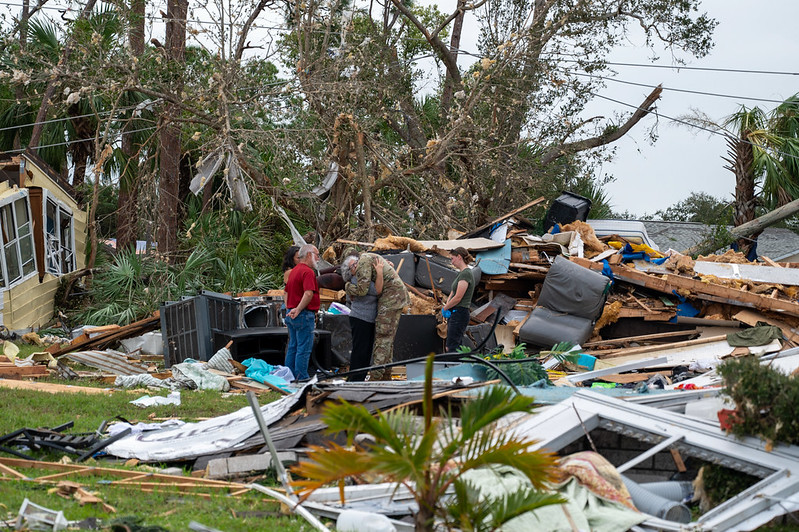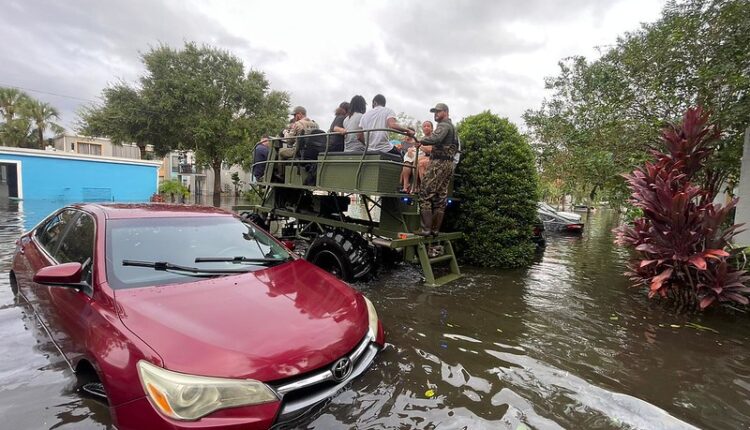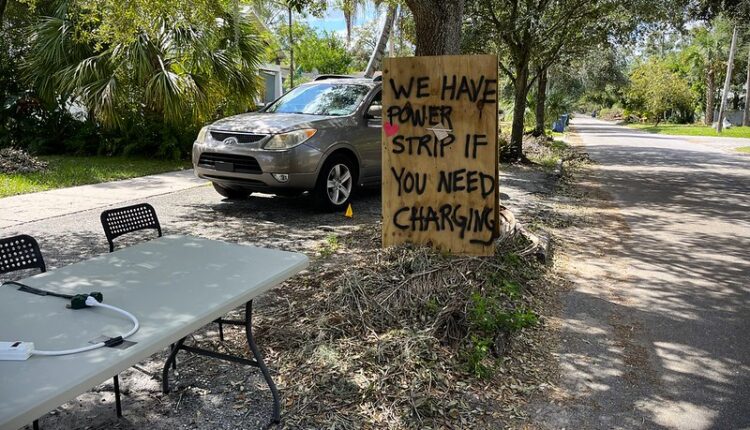Destruction of Hurricane Milton Highlights Urgency for Climate Action and Social Equity

Hurricane Milton is the ninth hurricane in the 2024 Atlantic hurricane season and one of the most intense storms ever recorded in this basin. Milton made landfall just two weeks after the effects of Hurricane Helene killed at least 225 people across the southeastern coast of the United States, and after prompting millions of Floridians to evacuate the coast once again, Milton has been recorded to have claimed at least 23 lives in Florida as of current. Occurring in such a close time frame, these storms have left an endless path of pain and despair for countless locals and their loved ones.
Not only have these “once in a lifetime” hurricanes led to extensive death, destruction, and pain, but storms like Milton and Helene are clear representatives of the urgency to mitigate and prevent the effects of climate change.

Billion-dollar disasters like Milton are becoming more common, an evident consequence of the warming climate effects on brewing storm surges.
Warmer sea surface temperatures intensify tropical storm wind speeds, thus providing the potential to convey more damage if such storms make landfall. The past four decades have seen catastrophic hurricanes happening more frequently than those of smaller scale; the National Oceanic Atmospheric Administration predicts such intensification to continue, estimating that Category Four and Five hurricanes will become more recurrent.
Atmospheric changes also hold a strong role in the intensifying of hurricanes and tropical storms, as warmer air temperatures can hold more water vapour, thus allowing storms to produce more intense rainfall rates. Flooding, for instance, is aggravated by heavy rain, which can result in various costly damages like soil erosion, building and road destruction, and the flushing of pollutants into waterways.
As climate change intensifies, its impacts and economic costs will only continue to rise as more natural disasters occur.
It is estimated that Milton alone will cost around $100 billion USD in total economic damage, highlighting the massive economic harms that result from recurring and worsening natural disasters. From 2016 to 2022, hurricanes cost the United States over one trillion USD— quite a burdensome figure.
The costs of these damages, however, are not trammelled equally among the individuals susceptible to such—and these costs are not purely monetary.
Natural disasters have a disproportionate effect on marginalized communities, which further exacerbates existing inequalities.
People of colour are more likely to reside in neighbourhoods with poorer infrastructure due to historical residential segregation, which heightens their risk of harm as well as limits their ability to prepare for natural disasters. In many U.S. states, these neighbourhoods are more commonly found in flood zones because of the lasting effects of redlining—a practice that denied specific financial opportunities from certain neighbourhoods in urban areas.
Neighbourhoods where marginalized communities resided—primarily Black households—were the urban areas that were likely to be redlined and given less funding, which resulted in poorer infrastructure. Without being able to achieve social mobility, these groups were stuck in “less desirable” or more “hazardous” areas that were and are more susceptible to hurricane damage.
Low-income households are also more susceptible to harm/damages from storms. The poor-quality infrastructure often seen with subsidized and affordable housing units puts residents at a pronounced risk of the effects of a severe storm. Multiple studies have shown that low-income households lack access to coping resources after disasters, a problem that households of higher income typically do not face. Lower-income households, for example, are significantly more likely to demonstrate concern about food than higher-income households post-disaster.
Marginalized communities still reside in these historically redlined and less developed neighbourhoods. A 2019 study from the American Public Health Association found that flooding was more significant in residential areas with a higher proportion of non-White and socioeconomically deprived residents during Hurricanes Harvey and Sandy. Considering displacements resulting from flooding, marginalized peoples are more likely to settle in informal settlements, which often carry health risks from lack of sanitation, electricity, clean water, and limited healthcare access. Disproportionate flooding thus contributes to health disparities for people of colour and low-income individuals in the presence of natural disasters, which is also associated with higher poverty and unemployment rates.
Consequently, marginalized communities are carrying the climate burden unequally compared to non-marginalized groups. The climate crisis is not only cataclysmic for the environment, but also for such individuals. This demonstrates how the effects of climate change are a social and political issue just as one of the environment, and thus measures for climate action must partake in an intersectional approach.
In an interview with Yale Sustainability, Cam Humphrey, an Environmental Justice Fellow at Race Forward, said that “[i]t is no secret that climate change disproportionately impacts some groups over others, like poor communities or communities of colour.” He shared that using intersectional approaches enables us to “see how climate change more harshly affects individuals [of such] vulnerable identities,” Harvey said.
Indeed, various scholars and studies have argued for the importance of adopting an intersectional lens to understand the effects of climate change, though such a lens is often inadequately assumed. A 2023 article from the International Journal of Human Rights asserted that the international human rights framework insufficiently addresses the protection of marginalized communities from climate-related harm, as it does not provide enough “attention to the way in which multiple forms of oppression influence and compound one another.” The framework tends to focus on isolated human rights violations—thus sectional rather than intersectional—and subsequently forms a barrier in amending international litigations of climate change-related human rights violations.

Deep-rooted inequalities weaken abilities to tackle climate change, signifying how substantial economic, social, and democratic reforms are imperative for handling the crisis. Like so many other problems, untangling the climate crisis requires digging into the crux of the issue; in the case of climate change, disparities in socioeconomics have a significant presence.
Economies of both domestic and global scales will continue to suffer without an intersectional approach to the climate crisis. Economic damages will worsen as climate change intensifies, not to mention the prohibition of economic growth, and the approach of intersectionality promotes the dilemma to be managed by addressing its sources.
In essence, Hurricane Milton’s destruction represents the dire global need for climate change policy that addresses not only the environment but also social inequalities. Climate change is a crisis that intertwines environmental and social issues, making it a social justice obligation just as much as an environmental imperative. Marginalized communities suffer disproportionately from the effects of climate change. To most efficiently combat the climate crisis, an intersectional approach that addresses the needs of vulnerable populations must be implemented. Without intersectionality, efforts to combat climate change will remain incomplete, as those who are already most at risk will be left behind.
Edited by Allison Dera
Featured image: Florida National Guard soldiers deliver water, food, and non-perishable goods to Port St. Lucie, Florida, senior citizens on October 11, 2024. “Florida National Guard” by The National Guard is licenced by CC BY 2.0.
